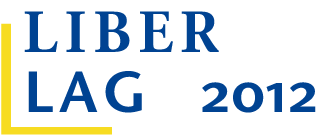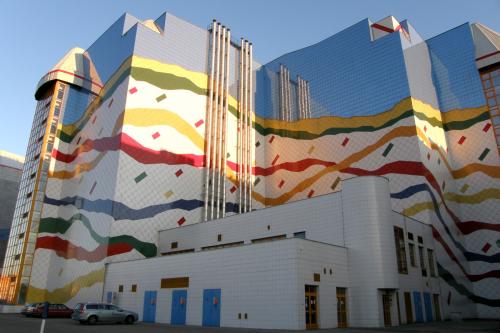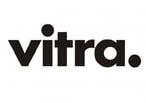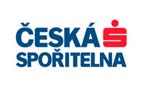Pre-seminar visits
Tuesday 17th April 2012pre-seminar trip (fee 50 EUR, bus and lunch included) |
Wednesday 18th April 2012pre-seminar visits |
| The Strahov Monastic Library map |
Tuesday 17th April 2012 - pre-seminar trip (Liberec, Hradec Králové)
The meeting-point is in the metro station – line B - Černý Most, exactly at the exit of this station under the footbridge (Chlumecká Street, direction from the centre), 9:00 a.m.; the expected return to Prague, Masarykovo nádraží at 7:30 p.m..
Zobrazit místo Chlumecká street na větší mapě
The Regional Research Library in Liberec
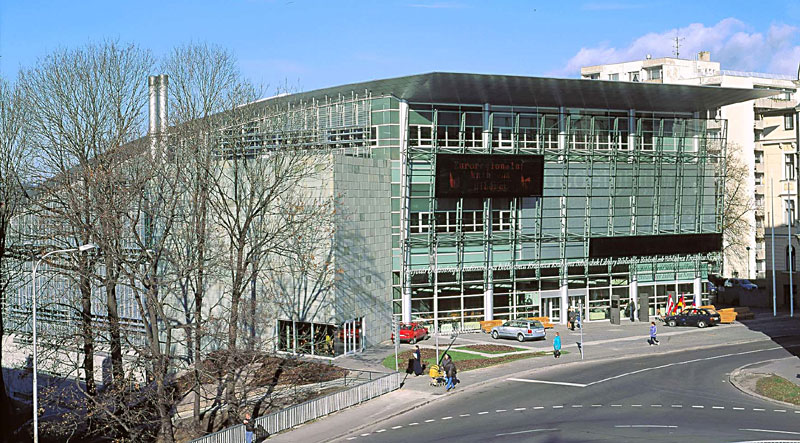
The Regional Research Library in Liberec is a prominent hub of information, education and culture in the city of Liberec and the Liberec Region as a whole, a place for people to meet. The Liberec Region has been the authority behind the library since 2001.
The library operates in the city and the region at the following levels:
- as a regional research library, with a thematically universal stock of documents that focus on glass and textiles;
- as a municipal public library with a freely accessible library stock of wonderful and popular non-fiction for readers of all age categories;
- as a regional library offering documents and information from the history and present of the region;
- as an information centre providing bibliographic, factual and reference material;
- as an access point to a wide range of information and databases which are available via the INTERNET (library catalogues, information from state administration and self-governing regions etc.).
more information: http://www.kvkli.cz/en/about-the-library/letak_anglicky.pdf
The Research Library in Hradec Králové
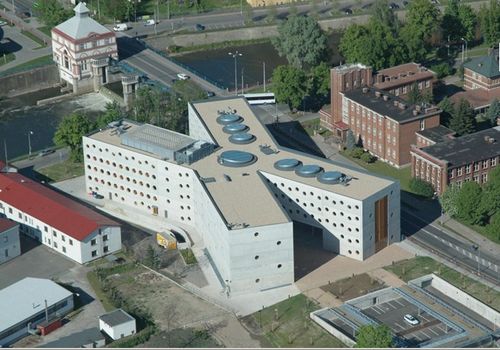
The Research Library in Hradec Králové is a public universal library. Through its services and holdings the library guarantees the right of equal and unrestricted access to all types of recorded information to all citizens. The Research Library is a part of a system of libraries and performs coordination, professional, information, educational, analytical, research, methodical and consultancy activities in conformity with valid legal regulations on providing public library and information services.
A modern complex of the library has been designed and its construction started in 2004. The new library was opened to the public in September 2008 .
more information: http://www.svkhk.cz/O-knihovne/Historie.aspx
Wednesday 18th April 2012
The Jan Palach Library (The Faculty of Arts Library, Charles University in Prague)

The meeting point: náměstí Jana Palacha, nearby Staroměstská station (metro green line A; tram 17, 18), 9:45 a.m.
Basic Facts about the Jan Palach Library: The Jan Palach Library is the newest among other more than 30 libraries at the Faculty of Arts. It is situated in refurbished premises in the main building of the Faculty of Arts; to place a modern project like this into a building which is almost one hundred years old was a true challenge. The biggest part of the library can be found under the street level. The reconstruction itself took two years and the library was opened on April 1, 2010. In October 2011 the Library was named the Jan Palach Library to ensure its better specification in the system of libraries at the FA. Jan Palach was a student of the Faculty of Arts in the 1960s, and today he is a powerful symbol of resistance against the communism.
Established by : Charles University of Prague, Faculty of Arts (FA)
User Group Specification: students of the Faculty of Arts and students of Charles University in general
Characteristics of Book Collections: The book stock contains basic study materials and books for B.A. degree programmes taught at CU FA, the entire collections of Slavonic studies (including Czech Studies), general linguistics, theatre studies, film studies and Scandinavian studies, a basic collection of works of fiction by world-renowned authors, around 150 items of Czech and international journals, and, in part, diploma theses and dissertations of CU FA graduates.
Services Offered: Confined loans in reading rooms, Internet access, free wi-fi, self-service copying, scanning, printing, reference service, book lending, a group reading room equipped with an overhead projector and audio system.
Reading Rooms Equipment: 160 reading places, 30 computers, self-service copy and printing machines, scanner
The National Archives
The meeting point: Chodovec bus stop (bus 135 and 213 from Opatov station - metro red line C; bus 115 from Chodov station - metro red line C or bus 125 from Smíchovské nádraží station - metro yellow line B), 9:45 a.m.
The National Archives is a state administration office as well as a central state archives directly controlled by the Ministry of the Interior of the Czech Republic. Taking into consideration spheres of activities of the Archives, and owing to the fact that it is directly linked with the work of the central archive institutions of the Czech state (continuously from the early Middle Ages), the National Archives deserves a prominent position among public archives of the Czech Republic. The seat of the National Archives is in Prague.
In accordance with the valid legal norms, mainly Act No. 499/2004 Coll., on archives and records service, Regulation No. 645/2004 Coll., implementing special provisions of the Act on archives and records service, and in accordance with the amendments of several Acts and also Regulation No.646 / 2004 Coll. which deals with details concerning the execution of records service, the National Archives practices a great many administrative and specialized activities.
The Municipal Library of Prague - Smíchov Branch
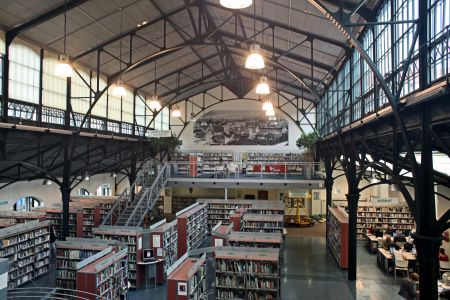
The meeting point: Arbesovo náměstí tram stop (tram 6, 9, 12 from Anděl station - metro yellow line B), 9:45 a.m.
Address: nám. 14. října 83, 150 00 Praha 5
Opening hours: Tuesday – Friday: 9am – 7pm, Saturday: 9am – 3pm
- Former market building constructed in 1907 – architect Alois Čenský
- Reconstruction in 2002 – 2003 – studio ATREA
- Special collection of the sci-fi and fantasy literature – special events CONs (convention)
- Merry-go-round in children deptartment
- Events - Literary workshops, Magic clubs, readings for public, MATADE (club for kids and their parents), PC clubs, Czech language courses for foreigners, theatre performances, …
http://www.mlp.cz/en/about-us/
http://www.mlp.cz/en/branches-and-contacts/branches/smichov/
The Academy of Sciences Library
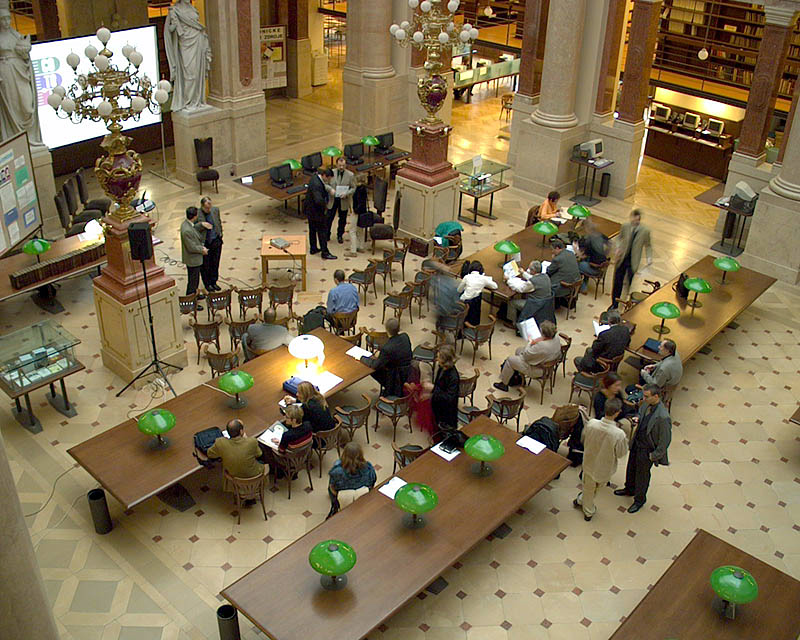
The meeting point: Národní divadlo tram stop (tram 6, 9, 17, 18, 21, 22), 10:00 a.m.
The Academy of Sciences Library (ASL) in the Czech Republic was opened on 1 January 1953. Having its initial collections from the Royal Czech Society of Sciences, from the Czech Academy of Sciences and from the Masaryk Academy of Labour, at the time of its establishment, the ASL was, the second largest universal scientific library in Prague and the third oldest Czech scientific library.
At present, the library administers more than 1,200,000 volumes, including around 25,000 volumes of archive documents, manuscripts, incunabula and old editions.
The ASL provides its users with access to both traditional printed documents and electronic, including remote access wherever it is permitted by licensing conditions. In the ASL reading room, readers can use WiFi and landline connections, self-service copying and scanning, and (last but not least) 28,000 monographs and 500 magazines and journals available right in the ASL reading room. Access to the complete ASL collection, most of which is stored in a depository outside Prague, is usually provided within 24 hours, and within 48 hours at the latest.
Users can use an on-line catalogue to manage their loans, while the library also provides interlibrary, research and reference services and the possibility of digitalisation to order of books published in the period 1500–1910. The ASL also has its own Copying and Binding Centre, and a Digitalisation Centre in Jenštejn u Prahy that produces the content of the Digital Library of the ASL CR.
Unique historical premises at Národní 3, built in 1861 and now used by the ASL, previously had belonged to Česká Spořitelna. The building had been designed and built by Ignác Ullmann, one of the most prominent representatives of the Neo-Renaissance style in the Czech Lands. The building was extended in 1893–1896 under the guidance of an Austrian architect, Friedrich Schachner.
The new part of the building features a replica of Ullmann’s Neo-Renaissance façade with motifs taken from the Neo-Baroque and hints of Art Nouveau, particularly in its extensive artistic decoration. The double-glazing in the roofing of the hall, which enlights the hall, is a feature of a particular technical interest. Two over life-size figures of caryatids, made from white Carrara marble, depicting allegories of Frugality (1895) and Thrift (1897), produced after J. V. Myslbek's design are probably the most famous and also one of the most valuable features of the hall - now the ASL reading room.
The Strahov Monastic Library

The meeting point: Pohořelec tram stop (22), 9.45 a.m.
The library of the Royal Canonry of Premononstratensians at Strahov, Prague, traditionally called the Strahov Library, is the second oldest still working library in the Czech Republic. Its historical book collection is the third biggest in the Czech Republic. The total number of volumes is 250 000, 3 000 of which are manuscripts and 2 200 incunabula. The books are saved in two historical halls. The Theological Hall which is decorated with Baroque frescoes and globes was completed in the 2nd half of the 17th century and houses 22 000 volumes.
Early Classicistic Philosophical Hall holding 40 000 volumes belongs to the biggest historical library halls in Europe (length 32 m, width 10 m, height 14 m). Their amazing wooden interiors as well as the impressive ceiling painting showing the intellectual progress of mankind were recently restored. In the corridor connecting both halls a historical cabinet of curiosities is installed. Items of natural sciences and archaeology as well as a late 18th century triboelectric machine are to be found there.
Among the famous historical visitors of the most famous monastic library of Czech Republic belonged e. g. admiral Lord Nelson, Bonaparte’s wife Marie Louise, composer Frederic Chopin, writer Hans Christian Andersen and inventor Thomas Alva Edison.
